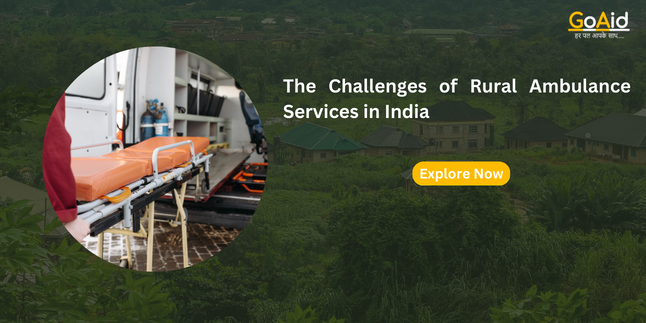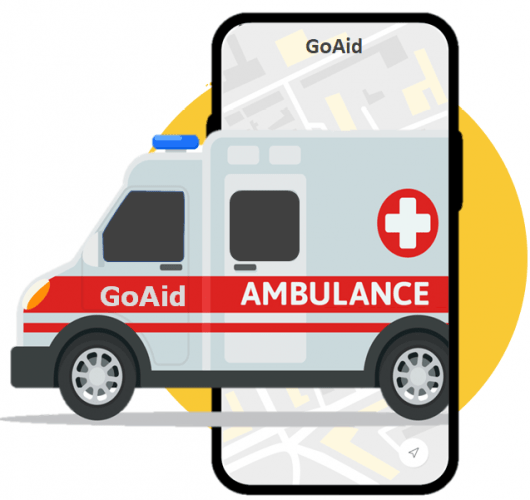Once Gandhi ji said, that the majority of India lives in Villages in India. This statement is still validating itself. This is why, for good governance and service people with at least required facilities in rural India are crucial. This is why, when it comes to ambulance services serving in rural India, there is a list of challenges that are faced by Ambulance services in India.
Even, people should also know about those challenges so they can do what they can so ambulance can ensure their best response time to serve them with good effect. In this blog, we have mentioned the challenges that Ambulance services face in rural India. Also, we have added solutions to those challenges that ambulance services opt for their better response time.
If you are also willing to know about those challenges, then read this blog to the end.
So, letŌĆÖs start-
The Challenges of Rural Ambulance Services in India
There are a lot of challenges that an ambulance service faces while serving in Rural Areas of India. However, we have added some of those challenges that are common for all kinds of ambulance services available in India and faced them during their serving time.
1. Geographic Accessibility
Rural ambulance services face challenges due to vast and remote terrains, impacting response times and hindering swift medical interventions for residents in need.
2. Limited Infrastructure
Inadequate road networks and poorly maintained infrastructure pose obstacles for rural ambulance services, impeding their ability to reach patients efficiently during emergencies.
3. Resource Scarcity
Rural areas often lack sufficient ambulance fleets, medical personnel, and equipment, limiting the capacity to provide timely and comprehensive emergency medical services.
4. Skilled Workforce Shortage
A shortage of skilled paramedics and emergency medical technicians in rural regions contributes to a critical gap in expertise, affecting the quality of care delivered during emergencies.
5. Communication Challenges
Poor network connectivity in remote areas hampers communication between ambulance services and healthcare facilities, hindering coordination and timely updates on patient status.
6. Cultural and Language Barriers
Diverse linguistic and cultural backgrounds in rural communities present challenges in effective communication between healthcare providers and patients, impacting the delivery of emergency care.
7. Lack of Awareness
Limited awareness about the importance of ambulance services and emergency medical care in rural populations can result in delayed calls for assistance during critical situations.
8. Financial Constraints
Economic constraints in rural areas may restrict the allocation of funds for ambulance services, limiting investments in necessary equipment, training, and infrastructure development.
9. Limited Specialized Services
Rural ambulance services may struggle to provide specialized medical interventions, such as advanced life support or trauma care, due to the absence of specialized personnel and resources.
10. Seasonal Challenges
Adverse weather conditions, especially during monsoons or extreme temperatures, pose significant challenges for rural ambulance services, impacting their ability to navigate and respond promptly.
11. Inadequate Medical Facilities
The scarcity of healthcare facilities in rural areas exacerbates the challenges faced by ambulance services, as patients often need to be transported over longer distances for adequate medical care.
12. Technological Gaps
Limited access to advanced medical technologies and telemedicine in rural regions impedes the ability of ambulance services to provide real-time medical assistance and consultations.
13. Community Education
Lack of education and awareness about basic first aid and emergency response measures in rural communities hinders the community’s ability to provide initial care before the arrival of ambulance services.
14. Delayed Patient Transfers
Limited availability of tertiary care centers in rural areas can result in delayed patient transfers, affecting the continuum of care and increasing the risk of adverse outcomes.
15. Terrain and accessibility
Challenging terrains, such as hilly or remote areas, make it difficult for ambulances to navigate and reach patients swiftly, leading to potential delays in emergency response.
16. Equipment Maintenance
Rural ambulance services may face difficulties in maintaining and repairing equipment due to limited access to specialized technicians and workshops, affecting overall operational efficiency.
17. Community Reluctance
Cultural beliefs or hesitations about accepting outside medical assistance can contribute to delayed response times, as communities may rely on traditional healing practices in emergencies.
18. Limited Government Support
Insufficient government funding and support for rural ambulance services may hinder their ability to invest in modernizing fleets, training personnel, and upgrading equipment.
19. Security Concerns
Ambulance crews in rural areas may face security challenges, especially in areas prone to civil unrest or crime, impacting their ability to operate safely and provide timely care.
20. Data Collection and Monitoring
Limited data collection infrastructure in rural ambulance services hinders the monitoring and evaluation of response times, patient outcomes, and overall service effectiveness.
GoAid Ambulance Service – Transforming Rural Healthcare Challenges into Opportunities
In the vast landscape of rural India, GoAid Ambulance Service emerges as a beacon of transformative healthcare. Addressing the challenges faced by rural ambulance services, GoAid pioneers swift responses, overcoming geographic barriers with strategic fleet deployment.
Its commitment to infrastructure development ensures navigability even in challenging terrains. With a skilled workforce and advanced technology, GoAid delivers specialized services, bridging gaps in rural healthcare.
Community education initiatives foster awareness, while robust communication networks and seasonal preparedness underscore their dedication. GoAid’s holistic approach not only navigates obstacles but also transforms rural emergency care, setting a benchmark for comprehensive, efficient, and life-saving services.
Conclusion
In conclusion, the challenges facing rural ambulance services in India underscore the urgent need for targeted interventions. From limited resources and workforce shortages to infrastructure and cultural barriers, these hurdles impact timely and effective emergency medical care.
Collaborative efforts, increased funding, and innovative solutions are essential to bridge these gaps, ensuring that every corner of rural India has access to prompt and reliable ambulance services, ultimately saving lives and enhancing the overall healthcare landscape in these underserved regions.
Faqs :
1. What challenges do rural ambulance services face in providing emergency medical care?
Answer. Rural ambulance services encounter challenges such as poor road infrastructure, limited accessibility to remote areas, and a shortage of trained medical personnel. These factors contribute to delayed response times, making it difficult to provide timely emergency medical care in rural regions.
2. How is the infrastructure for ambulance services in rural India, and what improvements are needed?
Answer. The infrastructure for ambulance services in rural India often faces challenges like poorly maintained roads and insufficient connectivity. To enhance the system, there is a need for improved road networks, better-equipped ambulance fleets, and increased accessibility to remote areas, enabling faster and more efficient emergency response.
3. What kind of medical equipment and trained staff are available in rural ambulances?
Answer. Rural ambulances typically have basic medical equipment such as first aid supplies and life support systems. However, there’s often a shortage of trained staff, including paramedics and emergency medical technicians. To enhance service quality, there is a need for increased availability of well-trained healthcare professionals and advanced medical equipment in rural ambulances.
4. How effective is communication between rural ambulance services and healthcare facilities?
Answer. Communication challenges between rural ambulance services and healthcare facilities can hinder effective emergency response. Insufficient communication infrastructure, including a lack of advanced systems for real-time updates, can lead to delays in coordinating with medical facilities. Improvements in communication technology are crucial for seamless coordination and timely patient care.
5. How readily available are ambulance services in rural areas of India?
Answer. Availability of ambulance services in rural areas varies, with some regions facing challenges due to inadequate infrastructure and resources. Efforts are needed to expand the coverage of ambulance services, ensuring that remote communities have access to timely emergency medical transportation.
6. What financial challenges do rural ambulance services face, and how does it impact their operations?
Answer. Rural ambulance services often grapple with financial challenges, including limited funding for vehicle maintenance, fuel, and staff salaries. This financial strain can impact the overall efficiency of operations, leading to delays in response times and compromised quality of service. Adequate funding and financial support are crucial for sustaining and improving rural ambulance services.







